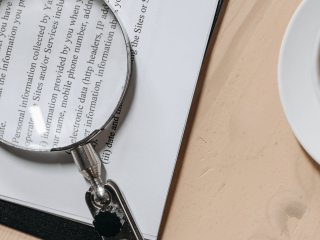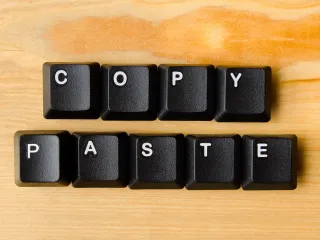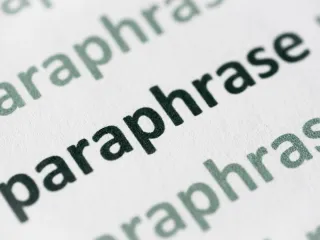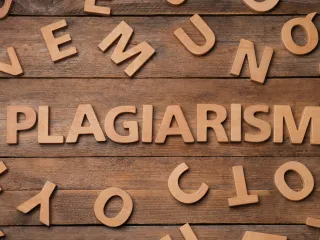How to Cite a Report in APA, MLA, and Chicago Style
Reports are a frequent source for students completing school assignments and copywriters creating content. No, not your report. Rather, we’re talking about reports published online and in journals that contain information you use in your own writing, and therefore need to cite.
Fortunately, you can use citations to cite absolutely anything. A diversity of sources will enrich your pieces, whether you use a journal article, research reports, government documents, or even a humble PowerPoint. Not only that, but knowing how to format a report properly will keep you free of accusations of plagiarism, academic dishonesty, and intellectual property theft.
This article will set you up for success in report-style writing with comprehensive directions and examples for citing any style, including APA, MLA, and Chicago.
Benefits of Using Reports in Your Research
So why use reports in your writing? Simple. Drawing information from an online report or journal article can elevate your writing, enrich its data sets, deepen your credibility and underpin your argument as nothing else can. Whether it’s a business annual report, government report, or periodical entry, reports tend to be data-rich and full of strong ideas. Possibilities include:
- Governmental census data
- Governmental security data
- Scientific/health research and findings
- Non-profit annual summaries
- Special reports for organizational restructuring or announcements
- Academic institution reports
- Medical and scientific meta-studies
- Aggregations of others’ research in science, psychology, medicine, etc.
While reports may take many forms, their main goal is to summarize lots of data. They don’t necessarily need to be time-sensitive, although they sometimes are, especially in a business setting. In science and medicine, on the other hand, reports are still viable many years after they are published, so it’s less important to look for the latest periodical.
It is important, however, to ensure you cite each and every report correctly. If you use the wrong abbreviation, place information in an incorrect order, or employ the incorrect citation style, readers may have trouble finding the sources toward which you are directing them.
There are a few different citation styles that can be used to properly cite another person’s report. The most common are APA, MLA, and Chicago Style. What follows is a breakdown of each style. Check out the one that pertains to you, taking note of the types of information included, the order in which they’re written out, and examples that can provide additional clarity.
Citing a Report in APA Style
APA, named for the American Psychological Association, is the main research reports format used in the science and medical industries. The 7th edition of the APA citation style guide, which is its most current, lists specific formatting in its publication manual that you must follow to adhere to guidelines from your professor or superior. Here is the basic APA citation for report format:
Author last name, Initials. (Year). Report title: Subtitle (Report No. number). Publisher name. URL (if applicable)
A citation of a report for a reference list will appear as follows:
Riker, W. T. (2021). Starships and their engines: An overview (Report No. 14:919). Massachusetts Institute of Technology School of Engineering. https://engineering.mit.edu/departments/reports/starships-and-engines.pdf
An in-text citation is shortened to look like this:
(Riker, 2021, p. 12)
Additional APA Formatting Notes
- Not all reports are online, so a URL is not always necessary.
- There is no period at the end of the URL, and you do not need to cite the date accessed.
- There is no report number needed in the report reference bibliography or works cited page.
- If there is more than one author, list up to 20 in the reference list using the same format of Last name, and first initials.
- If there are 21 or more authors, list 19, then an ellipse, then the final author.
Citing a Report in MLA Style
MLA style, named for the Modern Language Association, is commonly used for history, languages, and the liberal arts. It is similar to APA in that it includes information such as the web page, publisher name, individual author, title of the report, report number, publication date, page number, and more, formatted with variations of italics and parenthesis, etc. Specifically, its formatting is as follows:
Author(s) name. Title of the report. No. number. Publisher, Year of publication. URL and date of access (if applicable).
So an example would look like this:
Riker, William T. Starships and their engines: An overview. No. 14:919, Massachusetts Institute of Technology School of Engineering, 2021. engineering.mit.edu/departments/reports/starships-and-engines.pdf. Accessed 23 Oct. 2022.
The text citation simply includes the author’s last name and the page number, like so:
(Riker, p. 12)
Additional MLA Formatting Notes
- As with the APA format of reports, not all sources are online, so an URL is not always necessary.
- Note that the https:// has been removed from the hyperlink’s HTML formatting in MLA style.
- If there is no author, put the publishing entity (Massachusetts Institute of Technology School of Engineering) in the author slot and leave the publisher slot blank.
- For two authors, use the Last name, First name format for the first author, and then list the following authors in standard First and Last name style.
- For three or more authors, use the Last name, First name format, followed by et al.
Citing a Report in Chicago Style
Again, Chicago Style includes much of the same information as APA and MLA, but in a different order. The Chicago Style format for citing a report follows report formats for books quite closely, which may make it easier for students and writers already familiar with that format. A template is as follows:
First name Last name, Title of Work (Publisher city: Publisher, Year of publication), URL (if applicable).
In a full reference format for report writing, a Chicago Style citation will appear as:
William T. Riker, Starships and Their Engines: An Overview (Cambridge: Massachusetts Institute of Technology School of Engineering, 2021), engineering.mit.edu/departments/reports/starships-and-engines.pdf.
The in-text citation includes the author(s), year, and pages, as with APA style, like so:
(Riker, 2021, p. 12)
Additional Chicago Style Formatting Notes
- You can find the city in which the report was published by searching the info at the top of the report or looking up the address of the publisher. If you can’t find either, leave it blank.
- The title of the work is in title case, as opposed to sentence case for APA and MLA.
- Like APA style and unlike MLA, you do not list an access date for the URL (as appropriate depending on whether it was online or not).
- For a report with two authors, use both last names in the in-text citation with an “and” between. For a report with three, list Author 1, Author 2, and Author 3. However, if the report has four or more, list the first author’s last name followed by “et al” without a comma between.
Closing Thoughts (and Some FAQs)
In a nutshell, proper citations, complete with the name of the author and other pertinent information, are crucial. They ensure credit is given to others’ work, and they keep you free of plagiarism concerns. Be sure you use the assigned formatting style, whether that’s APA, MLA or Chicago. This will help your readers follow the correct trail to your source, protecting you and its original writer.
Some people wonder whether content from an online report has to be formatted with parenthetical in-text citations. The answer is that while each style has citation guides if you wish to do this, it’s up to you whether they are necessary. Note that with direct quotes, though, they are, as the page numbers won’t appear in the corresponding reference list entry.
Another common question is what to do if one piece of information is missing, such as the government agency or organization’s name. The answer is to leave it blank and follow the format as best you can regarding punctuation
Others are concerned that they might accidentally plagiarize, which is definitely a valid fear. This happens all the time, even to people with good intentions. However, you can avoid this by using a citation generator and plagiarism checker, such as Quetext’s. Our plagiarism checker scans any entered work against all other previously submitted or published content on the internet and identifies areas of potential plagiarism. Quetext’s citation generator can then automatically create citations for sources that have not been properly accredited. This is the most reliable way to adhere to formatting standards, efficiently add references, and protect yourself in school and life.









